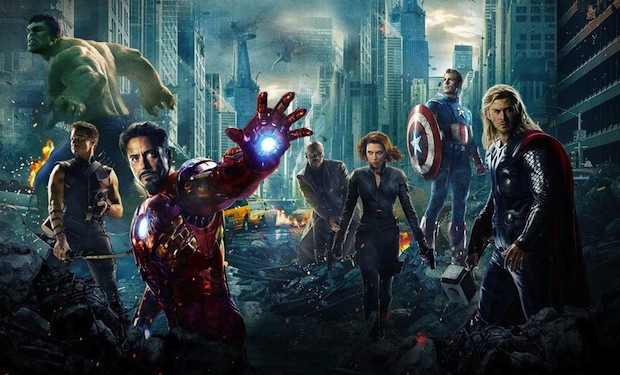A new study from USC has found that Hollywood is failing pretty much anyone who isn’t a straight white man.
A 700-film, 30,000-character study was undertaken by USC’s Media, Diversity, & Social Change (MDSC) Initiative, and the under-representation of women, LGBT individuals and people of color has led lead researcher Dr. Stacy L. Smith to conclude, “There is an epidemic of invisibility in film for anyone who is not a white, straight male.”
“17 films in 2014 featured no Black speaking characters,” she noted, “and over 40 films failed to depict an Asian that said one word. Only 19 LGBT characters were found across the 4,610 measured in the 100 top films of 2014, and not one was Transgender.”
“At a time when #LoveWins in our country,” Smith said, “it loses in film.”
The MDSC Initiative calls its study “the most comprehensive analysis of diversity in recent popular films.”
Here are some of the findings by category:
WOMEN
— Females represented just 30.2% of all speaking characters (30,835) across the 100 top films of 2007–2014 (the year 2011 excluded).
se 700 movies.
— Only 11% of the 700 films were gender balanced or featured girls/women in roughly half of all speaking parts.
— 21
films in 2014 had a female lead or co-lead character, similar to what
was observed in 2007 films (20%). Only 3 of the leads or co-leads were
played by underrepresented female actors.
— In 2014, no female actors over 45 years of age performed a lead or co -ead role. Only three of the female actors
in lead or co lead roles were from underrepresented racial/ethnic backgrounds. No female leads or co leads
were Lesbian or Bisexual characters.
— Less than a quarter of all speaking characters were female in the top animated films of 2014. Only 21.8% of speaking characters in action/adventure films were
female.
— Across 700 films, a total of 9,522 characters were coded 40‐ to 64‐years of age. Less than a quarter (21.8%) of
these characters were women. Only 19.9% of the middle‐aged characters were female across the 100 top films
of 2014.
— In 2014, females of all ages were more likely than males to be shown in sexy attire (27.9% of females vs. 8% of
males), with some nudity (26.4% of females vs. 9.1% of males) and referenced as physically attractive (12.6% of
females vs. 3.1% of males).
— Examining patterns of sexualization by age in 2014 revealed that female teens (13‐20 year olds) were just as likely to be sexualized as young adult females (21‐39 year olds). Middle‐aged females (40‐64 year olds) were less
likely than these two groups to be sexualized.
— Across the 100 top films of 2014, only 15.8% of content creators working as directors, writers, and producers
were women. Women only accounted for 1.9% of directors, 11.2% of writers, and 18.9% of producers. Put
differently, only 2 women directed across the 100 top films of 2014. This is not different from 2013 (2 female
directors across 100 top films) or 2007 (3 female directors across 100 top films). Twenty‐eight women have
worked as directors across the 700 top films from 2007 to 2014. Only three were African American.
— In the aggregate, films with at least one female screenwriter attached have more female characters and more
women 40‐ to 64‐ years of age on screen than films without a female screenwriter attached. Also, films with a
female lead or co-lead were associated with more girls/women on screen than those without a female lead or co-lead attached.
PEOPLE OF COLOR
— In the 100 top-grossing films from 2014, 26.9% of speaking characters were from an underrepresented racial/ethnic group.
— Only 17 of the 100 top films of 2014 featured a lead or co lead actor from an underrepresented racial and/or
ethnic group. An additional 3 films depicted an ensemble cast with 50% or more of the group comprised of
actors from underrepresented racial/ethnic backgrounds.
— 17 of the 100 top films in 2014 featured no Black or African American speaking characters. Over 40 featured no Asian characters.
— Of those characters coded for race/ethnicity across 100 top films of 2014, 73.1% were White,
4.9% were Hispanic/Latino, 12.5% were Black, 5.3% were Asian, 2.9% were Middle Eastern, <1% were American
Indian/Alaskan Native or Native Hawaiian/Pacific Islander, and 1.2% were from “other” racial and/or ethnic
groupings.
— Across the 100 top films of 2014, only 5 of the 107 directors (4.7%) were Black. One Black director helmed two
pictures and only one was female. Only 45 Black directors have been attached to the 700 top‐grossing films. This
represents 5.8% of all helmers in the years analyzed.
— Only 19 Asian directors worked across the 700 top‐grossing films. This is an overall percentage of 2.4%. Only 1
Asian director was female across the films analyzed and was listed as a co‐director.
LGBT
— Out
of 4,610 speaking characters across 100 films from 2014, only 19 were
Lesbian, Gay, or Bisexual. Less than half of one percent (.4%) of all
speaking characters in 2014 were LGB-identified.
— No transgender characters appeared in the 100 top grossing films of 2014.
— Of the LGB characters coded, nearly two‐thirds were male (63.2%) and only 36.8% were female. LGB characters
were also predominantly White (84.2%). Only 15.8% were from underrepresented racial/ethnic backgrounds.
Smith commented, “This is a representational crisis. Diversity
doesn’t really exist behind the camera.”
“The only thing lacking here is the imagination of writers and the creative community,” she concluded.
[via USC]







